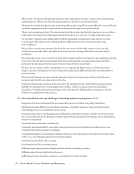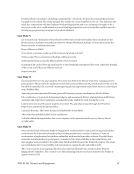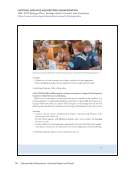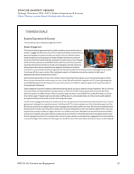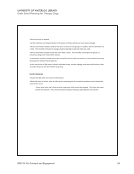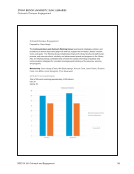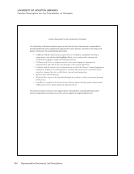67 SPEC Kit 361: Outreach and Engagement Offices with shared vision and similar constituents. Many offices that support student success. Often, the strategic partners approach us or we identify an event on campus where we can tag-in to provide outreach services. Our library does not have a coordinated outreach program, thus there is no coordinated way we do this library-wide. Partnerships arise in a variety of ways, but the community engagement and partnerships committee can help identify and prioritize potential partnerships. Read campus newsletters to see what is going on and make connections that way. Utilize donor relationships. Based on unexpected opportunities that come our way. So far we have never really laid out a plan to identify partners. It has been more grassroots planning and outreach. Someone will share a piece of news that a new partner might be on campus or in the community and we may brainstorm ways to reach out to them if the outreach can be seen as a benefit to both them and us. But this is very ground level, nothing is specifically done at a high level. Some are solicited based on outreach activities that the library initiates other partnerships occur when campus offices approach us. The examples above were identified after we were charged with piloting programs. The libraries review institutional strategic goals and new initiatives to determine which campus or community partners might offer opportunities that align with these broader goals. We also may work with partners who come to the libraries with a partnership if their goals align with the libraries’ goals and institutional goals. The university has several key programs that prominently connect to our curriculum and interdisciplinary research. They are featured in our strategic plan and have important funding associated with them. It’s important for us to connect to these key campus initiatives. There needs to be an investment of resources on both sides. All parties need to get something out of it. That “something” could be different for all partners involved but we try to make sure that the partnership is a 50/50 split in terms of work involved. This happens at various levels, from the dean to the subject specialists/liaison librarians. Typically, simply opportunistic, however, we do reach out for appropriate partners for specific events. Typically, these are reviewed/discussed at a library management team meeting. Units that have a clear overlap in mission, especially those that support student success, research excellence, public engagement. Varied and up to individual librarian and department. We are well known on our campus as being good academic partners and very student-centered. Many opportunities come our way organically and we weight those opportunities against our goals, primary mission, and time constraints. Other opportunities are identified to align with campus priorities. We choose partners when their goals align with our goals and/or services. We identify new partners based on university and library initiatives, grant opportunities, event- based outreach. We look for partners who are supporting the success of students outside the classroom and that support diversity in STEM on campus. We also collaborate with partners doing science outreach to the public. Additionally, we look for partners that are supporting the research enterprise. Purposefully brainstorm to create a list of potential strategic partners. Can also be serendipitous.













































































